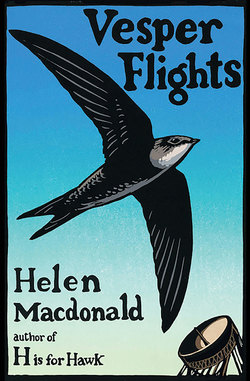Читать книгу Vesper Flights - Helen MacDonald - Страница 15
На сайте Литреса книга снята с продажи.
ОглавлениеAnts
At first there’s nothing notable about my drive back from the supermarket. I pass packs of schoolchildren on street corners, see a glossy SUV make a dickish manoeuvre at a roundabout, listen to someone complaining about something or other on the radio. Then my attention catches on something high and to the right of me. I tighten my hands on the wheel, pull into a roadside space a little further on, I lock the car and walk back, car keys loose in one hand, eyes turned up to the sky.
Some natural events track seasonal changes, and we treasure them for it. We wait expectantly for our spring swallows and swifts, the first summer butterflies; we listen for the mating calls of autumn foxes and deer. But in Britain we don’t have many visibly spectacular, large-scale yearly events whose precise calendar timing is unpredictable, like the spring spawning of thousands and thousands of silver grunion fish on Californian beaches for a few nights after a high tide. Even so, everyone here knows one. It doesn’t happen on the same day everywhere, but wherever you live, there’ll be one still, humid, bright day that triggers it, and today it’s happening right here.
Above me is a towering column of flying ants. I only know they are there because there’s also a column of about a hundred herring gulls borne on lean grey black-tipped wings, some cruising at rooftop height, others circling hundreds of feet above. They aren’t flying in the usual laconic manner, a lazy flap and glide from one place to another. They’re feeding. I can’t see the ants that they’re eating. But I know exactly where individual ants are, because every few seconds a gull twitches itself to one side, beats its wings once, twice, and snaps at the air. And another, and another. Above me is as much a feeding frenzy as any bait ball in a tropical ocean, but featuring gulls and ants rather than anchovies and sharks.
What I’m witnessing is the nuptial flight of a species of ant called Lasius niger, the common black ant of our town streets and suburban gardens. For the last twenty-four hours worker ants all across town and county have been enlarging the entrance holes to their underground colonies to make them big enough for winged virgin queens to emerge. The male drones, also winged, are already massing on the ground, and as the queens take flight, trailing pheromones, the drones chase them aloft. The queens take their pursuers higher and higher, waiting for males strong enough to reach them. They’ll mate, sometimes with a few different males from different colonies, in brief coincidences that herald the birth of tiny empires. On their return to earth, the drones die, while the queens rub off their wings and search for a place to start a new nest. Though these queens may live another thirty years, they will never mate again. Every fertilised egg they lay for the rest of their life will use sperm they store in their bodies from that one ascent on a summer afternoon.
I watch gulls from all points on the compass flying in to join the bonanza. The ants are caught up in a thermal of rising warm air, and as the incoming gulls meet its outside edge, the tip of one wing is tugged by the updraught; they straighten their wings, circle into it, and rise effortlessly. This tower of birds is an attraction visible for miles, an ephemeral landmark above a roadside church in a small country town. And these flocks of predators are one of the reasons why ants from a whole district all emerge at the same time; the more ants in the air, the more likely it is that some survive the onslaught of beaks. A red kite joins the flock, drifting and tilting through it on paper-cut wings stamped black against the sky.
We so often think of science as somehow subtracting mystery and beauty from the world. But it’s things I’ve learned from scientific books and papers that are making what I’m watching almost unbearably moving. The hitching curves of the gulls in a vault of sky crossed with thousands of different flightlines, warm airspace tense with predatory intent and the tiny hopes of each rising ant. It isn’t merely the wheeling flock of birds that transfixes me, or the magic of how the ants have carved out a discrete piece of unremarkable air and given it drama and meaning. It is that the motive power behind this grand spectacle is entirely invisible. This vast stretch of sky, the gulls, the imperceptible ants, is a working revelation of the interrelation of different scales of existence, and it is at once exhilarating and humbling. Humbling because this contemplation on scale and purpose can’t help but remind me that I’m little more than an ant in the wider workings of the world, no more or less important than any of the creatures here. Mesmerised, I watch a party of swifts pile in to take their turn at the harvest, wings scything, pink gullets open wide to scoop ants from the air. Craning my neck, I follow them up until the flock banks between me and the sun, and the fierceness of the light erases them from sight. My eyes water, and I look down to the ground I’d forgotten, to tarmac covered with the glittering wings of drones and queens all readying themselves for their first, and final, flight.
